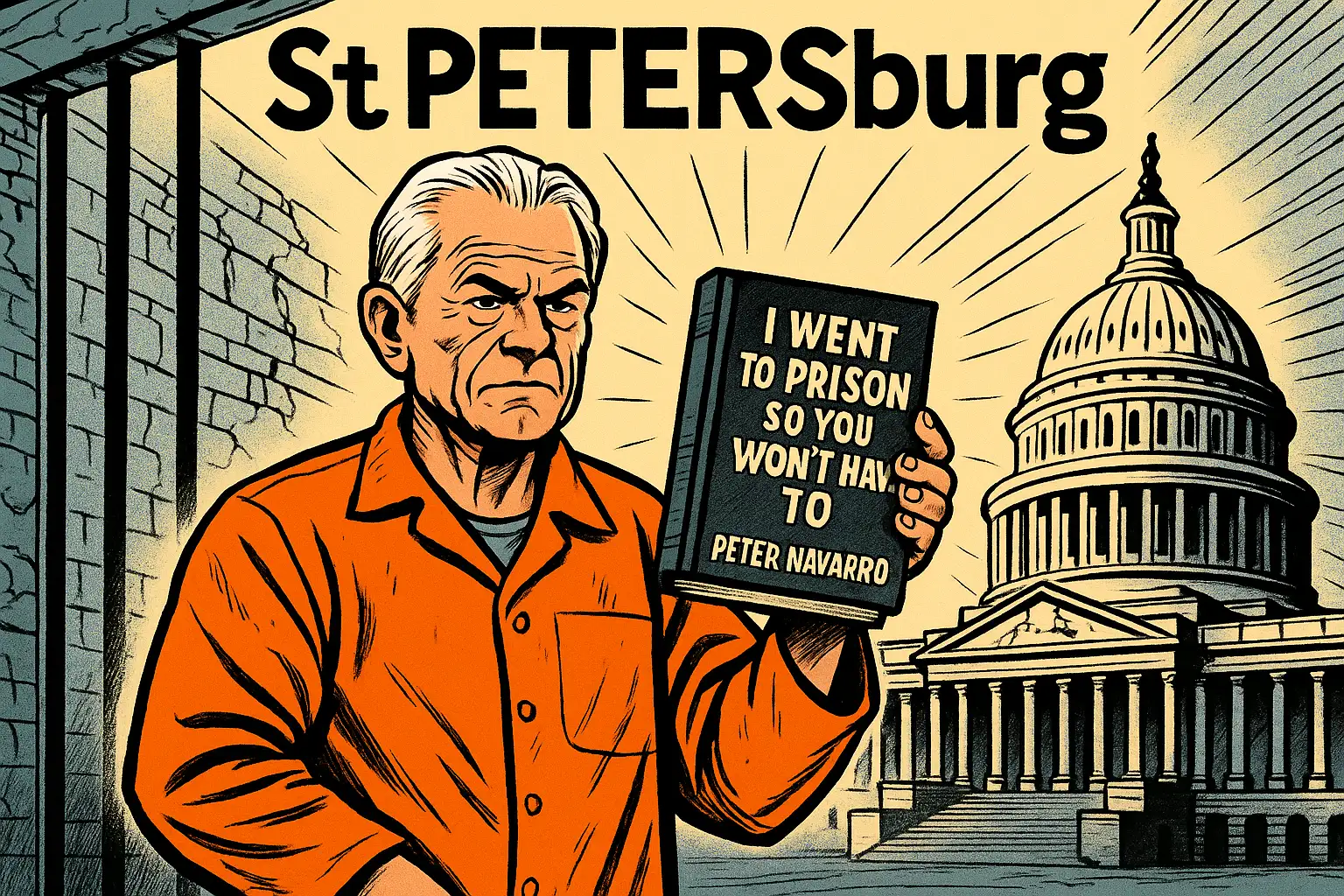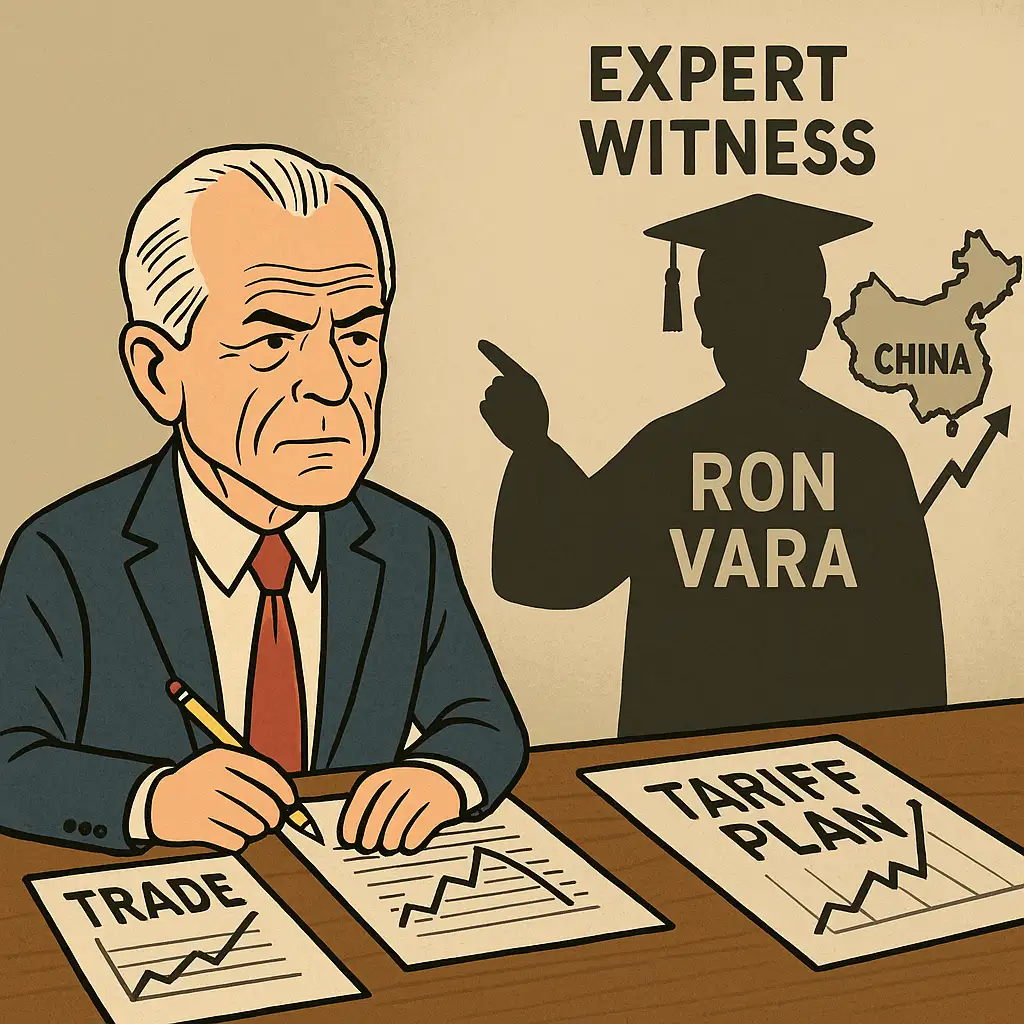On the eve of April Fool’s Day in 1998, New York’s art world raised its glass to a ghost. In a SoHo loft, David Bowie read excerpts from a newly published biography, critics murmured gravely, and the city’s cultural elite toasted the rediscovery of Nat Tate — a tragic abstract expressionist who, the story went, had destroyed nearly all his canvases before leaping from the Staten Island ferry into the night. His few surviving works were rare, his genius unquestioned.The only snag: Nat Tate never existed.He was the invention of Scottish novelist William Boyd, name and backstory conjured from thin air. With Bowie, Gore Vidal, and Picasso’s biographer John Richardson in on the act, the hoax spread quickly through Manhattan’s salons. Few dared admit ignorance. Many nodded along, unwilling to look foolish. Within days the ruse was exposed, but the point had already been made: even the sharpest arbiters of taste can be duped when vanity outweighs scepticism.Two decades later, a different kind of phantom surfaced—not in the art world, but in the heart of American economic policy. Peter Navarro, Donald Trump’s self-styled “Tariff Man,” conjured up his own Nat Tate. His creation wasn’t a painter but an economist, a Harvard-trained sage named Ron Vara, whose pithy quips and dire warnings about China appeared throughout Navarro’s books. Vara was quoted as if he were a real authority, validating Navarro’s apocalyptic view of globalisation. In reality, Vara was an anagram of Navarro—literally himself, disguised as his own expert witness.What Boyd staged as an April Fool’s stunt, Navarro repurposed as a policy crutch. And unlike Nat Tate, Ron Vara’s fiction wasn’t confined to a gallery launch—it shaped the arguments of a man whispering into the President’s ear.
Navarro: India’s Reluctant Nemesis

Navarro has a peculiar gift: he can wake up in Washington and make headlines in Delhi before breakfast. He has called India the “maharaja of tariffs.” He has blamed Narendra Modi for the Ukraine war. He has even claimed that “Brahmins are profiteering at the expense of the Indian people” by reselling Russian crude. Navarro long ago discovered that if he insults India loudly enough, someone will amplify it across the Indian press.But Navarro wasn’t always a headline provocateur. He began as a middling academic and failed politician in California, dabbling in environmental issues before reinventing himself as a China hawk. His books—The Coming China Wars, Death by China—were shrill warnings about Beijing’s rise, thick with hyperbole and padded with alarmist citations. On their own, they might have faded into obscurity. But then Jared Kushner slipped a copy of Death by China into Trump’s reading pile.Trump loved it. Navarro was brought into the campaign, then the White House, where he became the loudest advocate for tariffs and economic nationalism. While establishment advisers like Gary Cohn or Steven Mnuchin tried to temper Trump’s instincts, Navarro egged him on. He told Trump what he wanted to hear: that trade deficits were national betrayals, that tariffs were weapons of self-defense, and that China was waging economic war against the United States.When he needed backup, Navarro didn’t just turn to economists who agreed with him—he manufactured one.
Enter Ron Vara

Somewhere between the footnotes and the fever dreams of Navarro’s bibliography emerged a figure named Ron Vara. Vara was billed as a Harvard-educated expert who spoke with refreshing bluntness about the dangers of Chinese exports and globalisation. He appeared in Navarro’s books as the voice of common sense in a world gone soft on Beijing.One of Vara’s most infamous observations reads like an unhinged stand-up routine: “Only the Chinese can turn a leather sofa into an acid bath, a baby crib into a lethal weapon, and a cellphone battery into heart-piercing shrapnel.” You could almost picture Trump reading this aloud at a rally, pausing for applause.The beauty of Ron Vara, for Navarro, was that he could say the things Navarro wanted to say but couldn’t quite attribute to himself. Vara was the economic id unchained. Where real experts might hedge or introduce nuance, Vara cut straight to Navarro’s worldview: China was not a competitor, it was an existential threat, and tariffs were the only way to defend America’s soul.There was, of course, one small issue. Ron Vara didn’t exist.The name “Ron Vara” is simply “Navarro” rearranged. A neat little anagram masquerading as a man. Navarro had conjured his own alter ego, dressed him up as a Harvard alumnus, and then repeatedly cited him across at least half a dozen books. It wasn’t a one-off prank. It was systematic.
The Discovery of a Phantom
For years, nobody noticed. Navarro wasn’t exactly a household name before Trump. His books were polemical, sold in modest numbers, and largely ignored by the academic mainstream. But once Trump elevated him, readers, journalists, and researchers began combing through his work.In 2019, Australian scholar Tessa Morris-Suzuki tried to track down the prolific Ron Vara. She found nothing. No publications. No lectures. No academic record. A journalist from The Chronicle of Higher Education soon confirmed the truth: Vara was a phantom.Cornered, Navarro admitted the ruse but brushed it off. Vara, he insisted, was just a “whimsical device,” a kind of running gag. His publisher, less amused, quietly added disclaimers to later editions. One co-author admitted he had known all along. Another was blindsided, furious at being associated with fiction smuggled into nonfiction. Beijing’s foreign ministry mocked the entire affair, warning that it was dangerous for the world’s leading economy to be advised by men who fabricated experts to validate their policies.The joke had curdled.
When Fiction Becomes Policy
The temptation is to dismiss Ron Vara as a quirky anecdote, the academic equivalent of trolling. But that misses the point.Navarro was not a novelist. He was a senior White House adviser. His books, ghost quotes and all, helped shape the worldview of the most powerful man on earth. And that worldview had consequences: hundreds of billions of dollars in tariffs, retaliatory strikes from China, disrupted supply chains, and farmers across America pleading for relief.Ron Vara wasn’t just a joke. He was part of Navarro’s arsenal. When real economists questioned the logic of tariffs, Vara was there to nod along. When Gary Cohn or Steven Mnuchin tried to temper Trump’s impulses, Vara’s spectral presence loomed in the background – a reminder that somewhere, an “expert” agreed with Navarro’s belligerence.It was a neat trick: turn fringe theories into orthodoxy by inventing a consensus that never existed. For a while, it worked. Trump bought in. His base loved the theatrics. Navarro, with Vara in tow, became the uncompromising voice of protectionism in a White House otherwise torn between pragmatists and ideologues.
India in Navarro’s Crosshairs
So how does India fit into all this? Quite naturally, as Navarro’s next rhetorical punching bag.For Navarro, India is useful in the same way Ron Vara was: as a prop. When he calls India the “maharaja of tariffs,” he isn’t making a policy argument, he’s performing. When he accuses Brahmins of profiteering, he isn’t describing reality, he’s reaching for a cultural jab designed to sting. When he brands Modi complicit in Ukraine, he’s less concerned with geopolitics than with finding a new villain to keep the spotlight on himself.It is Navarro’s gift—and curse—to turn everything into theatre. China, Mexico, Germany, India: all reduced to caricatures in his morality play of economic betrayal and nationalist revenge. And if no one agrees with his script? Well, that’s why Ron Vara was invented.
From Nat Tate to Ron Vara, Again
There’s a phrase that captures Navarro’s use of his phantom economist: epistemic closure. A closed loop where the only voices you hear are the ones you create. He didn’t need to argue with economists; he could conjure one who always agreed.In a White House where ideology routinely trumped reality, Navarro’s invention fit right in. But unlike Trump’s late-night tweets or Rudy Giuliani’s courtroom pratfalls, this wasn’t theatre that vanished the next morning. Tariffs were real. Market shocks were real. Farmers driven to bankruptcy were real. By the time Vara was unmasked, the consequences had already spread across the globe.And this is where the story loops back to Nat Tate. Boyd’s imaginary artist fooled New York society for a week before being laughed off as an April Fool’s stunt. Navarro’s imaginary economist influenced the rhetoric of America’s trade war for years, and nobody laughed. The art hoax left behind a handful of fake paintings. The policy hoax left behind tariffs, retaliation, and real economic pain.The difference is instructive: when fiction slips into culture, it amuses. When it slips into government, it governs. Nat Tate was an April Fool’s joke. Ron Vara was April Fool’s elevated into statecraft.

